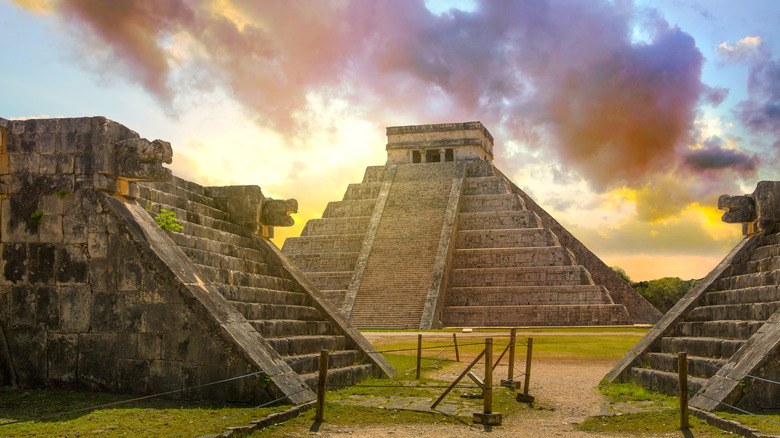Prehistoric Fun And Games In The New World
When you think of ancient civilizations in the Americas, you might think of innovations in agriculture, ceremonial dances, or Mesoamerican architecture. But the New World wasn't all work and worship. Though archeologists often interpret ancient findings from pre-Columbian America as either utilitarian or religious, this excludes all the other types of activities human beings partake in across cultures, including fun and games, according to University of California, Santa Barbara professor Barbara Voorhies (via Archaeology).
Increasingly, archeologists are recognizing that ancient indigenous Americans played games — even board games. At Tlacuachero, an island in southern Mexico that was probably used 5,000 years ago for harvesting fish and shellfish, archeologists discovered a clay floor covered in holes arranged in oval patterns. While holes elsewhere on the ground were likely used to mount poles for drying fish, these ovals were possibly used for playing a game.
Perhaps thousands of years later, Maya people created Bul, a board game that sounds like an ingenious combination of Chutes and Ladders and chess. It's basically a racing game in which you can capture your opponent's pieces and drag them home (via Cyningstan). The Zuni, who lived in what's now New Mexico, developed Awithlaknakwe, in which six "stone warriors" move across a giant playing board of 168 spaces. It's unclear if these games were developed before or after the arrival of Europeans, but their uniqueness suggests they were created independently.
High-stakes sports
Board games were common all over America, as were competitive sports. Most famously, the Iroquois people began playing what we now know as lacrosse in A.D. 1100, though their version could involve up to a thousand players in matches that lasted days, according to History. They called the sport baggataway, or tewaraathon. French settlers in Canada thought the netted sticks they used looked like a bishop's crozier, or in French, "la crosse" (per Britannica).
Maya and Aztec cultures had sports too, including something like the Mesoamerican version of lacrosse — an ancient ball game called ulama or tlachtli that is still played, in some form, today. Rubber is native to the New World, and so even the oldest versions of this sport used a rubber ball, weighing a massive 15 pounds, according to Encyclopedia. As fun as the earliest rubber-ball sport sounds, it apparently was associated with human sacrifice, with the loser (or possibly the winner, per Encyclopedia) being subject to decapitation.

